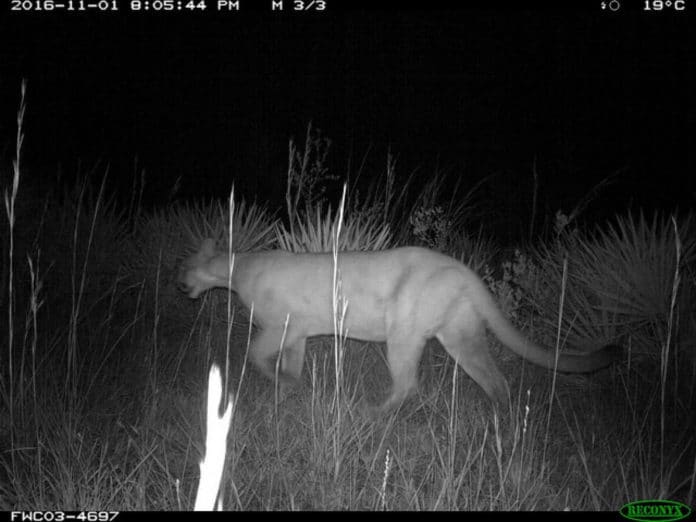Why did the panther cross the river? No one knows, but the big cat’s mini-migration has generated mega-excitement among conservationists.
The panther in question lives in Florida, and her species is endangered. Just 100 to 200 of the animals inhabit a southwestern patch of the state, and the future of their kind depends on roaming more widely and making more babies.
Kitten-making, of course, requires both males and females, the latter of which have been absent from the north side of the Caloosahatchee River for more than four decades. Males, which require a lot more territory than females, are known to hang out over there, but the local panther dating scene has been pathetic.
Until recently. The Florida Fish and Wildlife Conservation Commission’s “Panther Team” captured remote camera photos of what they thought might be a female on the north side in 2015. Using additional cameras, they got more snapshots this summer, the commission said in a statement. But the photos just confirmed the presence of a beautiful big cat, not its gender.
Things changed early this month, when a state biologist spotted a relatively petite panther paw-print near one of the trail cameras. The commission says the print, which was preserved in a plaster cast, is too small to be from a male and too big to be from a bobcat.
“When we saw the tracks, we felt confident they were made by a female panther,” Darrell Land, the panther team’s leader, said in a statement. “We could rule out a male panther because by the time males are old enough to leave their mother, their paws are already bigger than females’ paws.”
Southern Florida is not a great place for panthers to live – not in modern times, anyway. Those wide-ranging males get hit by cars on the freeways. Condos, ranches and parking lots sit on habitat that the cats need to cross to establish new territories.
So there’s a lot that stands in the way of a healthy population of Florida’s official state animal. But state officials are working on the panther’s recovery, and a key part of their plan depends on panthers breeding north of the Caloosahatchee River. The female footsteps on that side could signify an important step toward saving America’s panthers.
“This is a big deal for panther conservation,” said Kipp Frohlich, the commission’s deputy division director for Habitat and Species Conservation. “We want to ensure these majestic animals are here for future generations of Floridians. Female panthers moving north of the river on their own is a big step toward this goal.”
Author Information:






